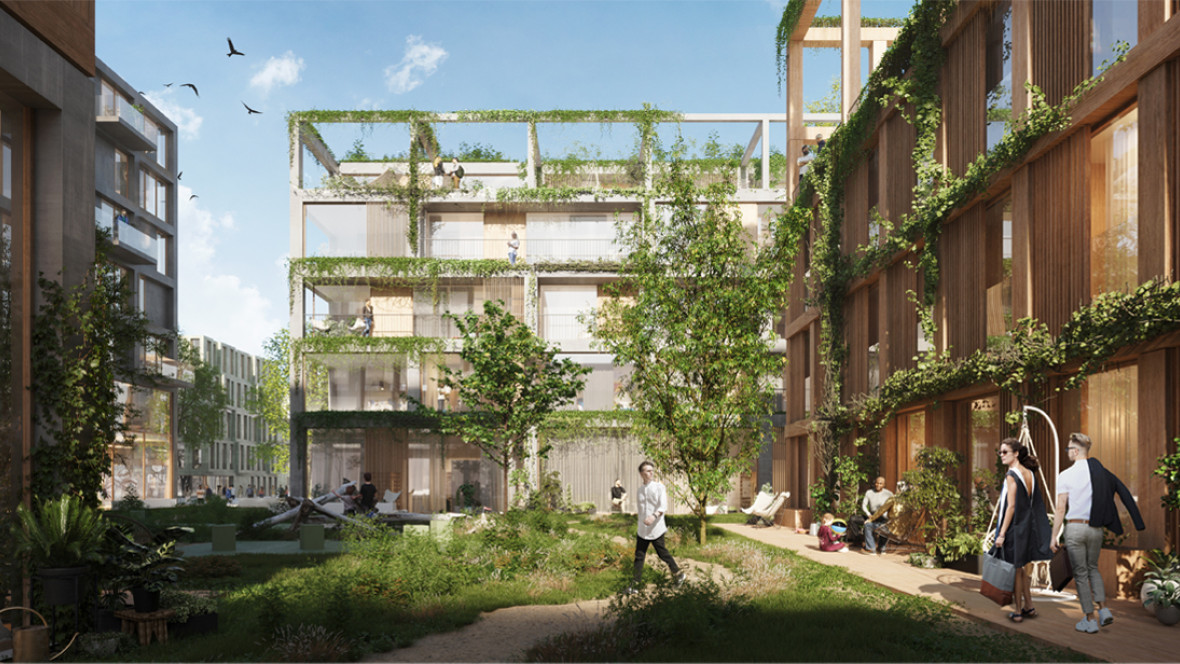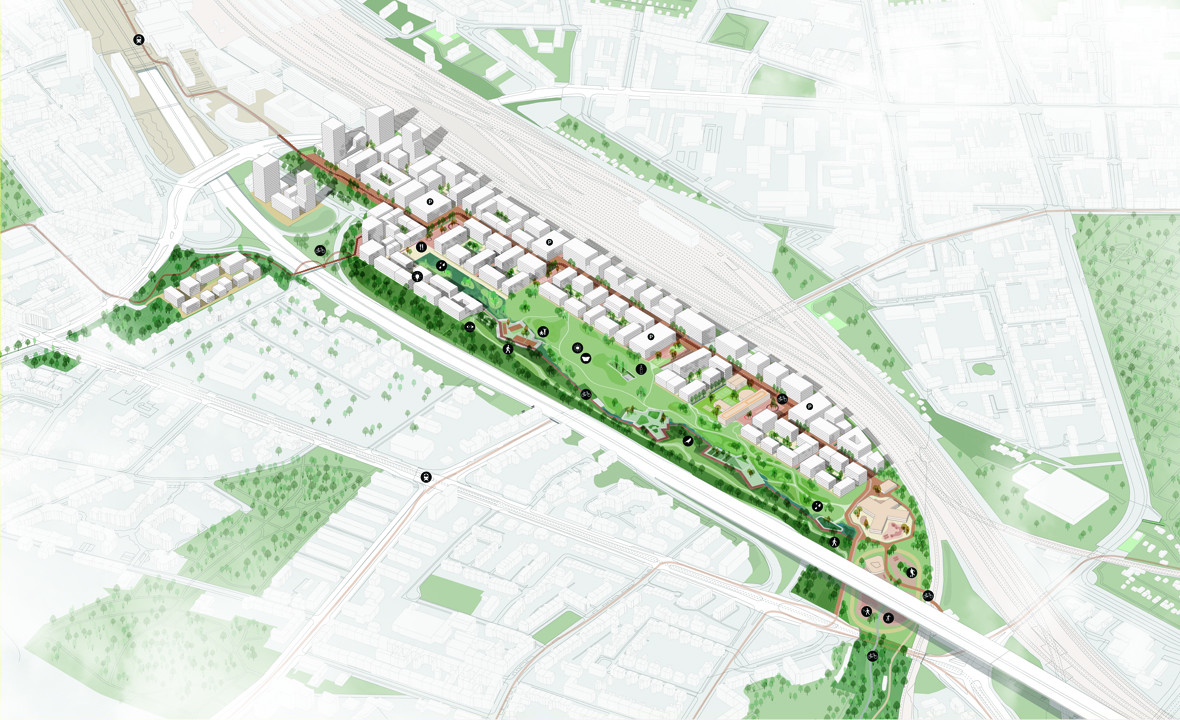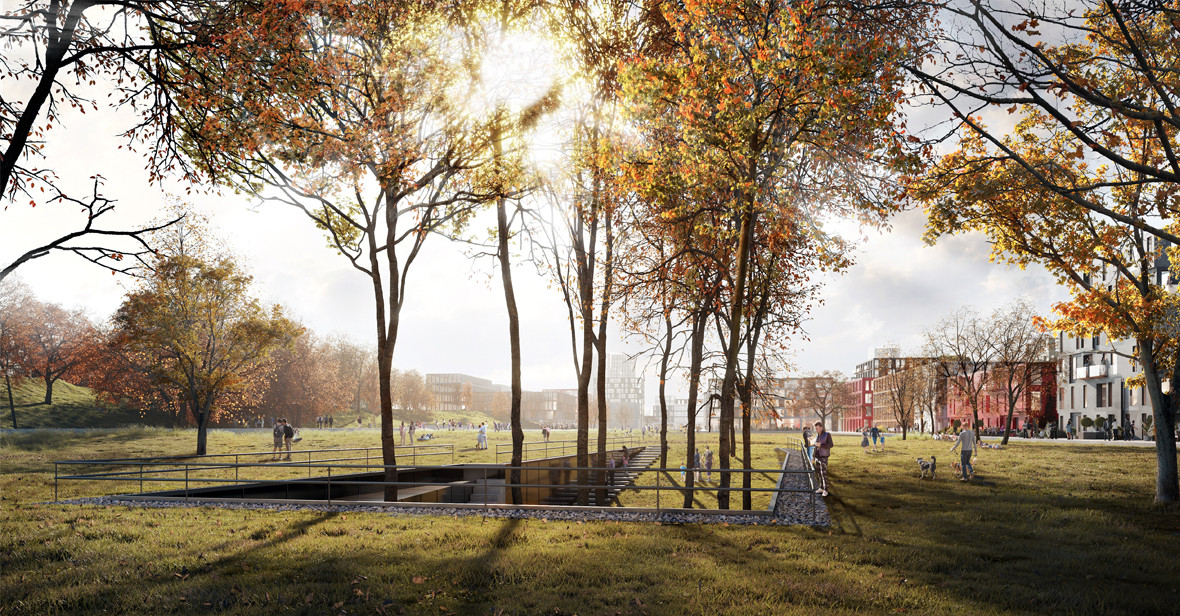


Karres en Brands has won third prize in the two-staged competition for 30ha development of the former freight yard area in Duisburg, Germany. The area can serve as a missing link in the city’s urban structure, offering a high connectivity potential to surrounding neighbourhoods and sport park in the south.
District G is not only a new urban quarter within Duisburg, but also one of the most important new gateways to the city. Lively and diverse, faithful to its history, but also ambitious and experimental - where sustainability is promoted in all aspects. It showcases a dense and central urbanity towards the center and central station and slowly dissolves into a diverse green city towards the south. District G projects onto the railway an evolution of the surrounding urban fabric revealing upon arrival a taste of the city. In doing to it not only provides a vibrant urban gateway into the city but also brings the two sides of the city closer together.
By building a compact quarter, District G provides maximum space for green towards the City. One of the most important gestures of our proposal is the strong and robust green connection that completes Duisburg’s green loop. Built at the intersection of industrial heritage, ecology and city life, the park combines these three ingredients to add a type of green space that is true to its roots as well as being forward-looking and embracing new uses. The existing polluted soil is being re-used on-site to generate and robust green cliff that protects from the incoming sound of the highway and provides a quiet refuge for urban life.
A traditional master plan cannot precisely anticipate the changing nature of the future. Therefore, we propose an urban plan to be much more a robust framework: a comprehensive ideological base for urban development, regulation and planning. The framework allows flexibility to respond to changing circumstances while steering the development of the station area towards a higher quality urban condition over longer periods and stimulating programmatic and typological diversity. At its core, District G is structured as an “urban Wunderkammer’, an ever-changing mosaic of public spaces and buildings that draw upon the identity of their surroundings to generate a whole new type of urbanity. In District G buildings are no longer defining the city but are simply providing the framework for urbanity. This simple yet clear strategy allows for maximum flexibility in typological use and change and allows the city to learn develop and change with time.
Renders: Vivid Vision
1st prize
CKSA Christoph Kohl Stadtplaner Architekten, Berlin
FUGMANN JANOTTA und PARTNER mbB, Berlin
Shared 3rd Prize with
CITYFÖRSTER architecture + urbanism, Hannover
felixx landscape architects & planners BV, Rotterdam (NL)

